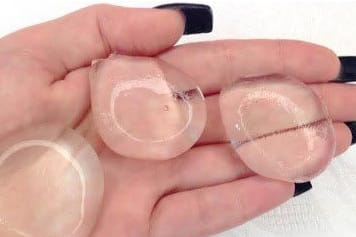KOLKATA: The
oxygen cylinder inside the “ICCU ambulance”, which brought critically ill Madhyamik examinee Abhijit Das to a Kolkata hospital from a Burdwan nursing home last week, was empty by the time the vehicle reached
Dankuni. The replacement cylinder had faulty pressure knobs and could not be used to supply oxygen to Das, leading to his death in transit.
When the first cylinder ran out of oxygen near Dankuni, Sk Sarfarajuddin, the AC mechanic who posed as a doctor and accompanied the patient, said he did not know how to replace it. It was then left to
ambulance driver Tara Babu Sha, who tried several times to fix the cylinder; but it did not work.
These shocking revelations came during the forensic examination of the ambulance in the presence of the two accused. It has laid bare how ambulance touts — operating across the city and in district towns from where patients are brought to Kolkata — flout the most basic of norms and fleece patients. It has also exposed the fact that critically ill patients are ferried to hospitals in vehicles that may not be equipped with life-supporting devices.
The forensic investigators pointed out that a proper ICCU ambulance should come with 33 equipment. In this case, the only things present inside the ambulance — besides the two cylinders — were a stretcher, a pulse oximeter, a syringe infusion pump, blood-pressure apparatus, a stethoscope and a first-aid box. “The list of items missing is a big one. There was no nebulizer, no pupillary torch, no defibrillator, no suction pump (manual or electronic) and no mouth-to-mask ventilation device. When we asked the two accused to try and operate the equipment, they failed to do it. We then conducted a quick test on whether they were aware where each equipment was kept. They failed that test too,” said a forensic expert on condition of anonymity. He said that calling such an ambulance an ICCU-equipped one was not only criminal but even life-threatening, especially for serious patients.
“The fact that the two made around 15-20 trips in the past and one-and-half years calls for a wider probe on the issue of ambulances. We are planning to inform the
Medical Council Of India about the malaise. This is now established that several doctors at Annapurna – including the RMO – had introduced Sarafajuddin as a qualified doctor. Hence, all these doctors and RMOs need to be questioned and their degrees checked,” claimed an officer.
While initially, Sarfarajuddin posed as a paramedic, his confidence grew after he began to push injections successfully inside the ambulance. “Sarfarajuddin has denied that he had posed as a doctor in the past. But the leads that we have show that he did claim to be a doctor who had passed out from a Kolkata government hospital in front of the patients.
He has made around 18-20 trips along with Sha to Kolkata, mostly to the various government hospitals. In his defence, he has said that there were not enough doctors in his place who would have the time to travel all the way to Kolkata,” said an investigating officer who has questioned both the accused since Friday.







